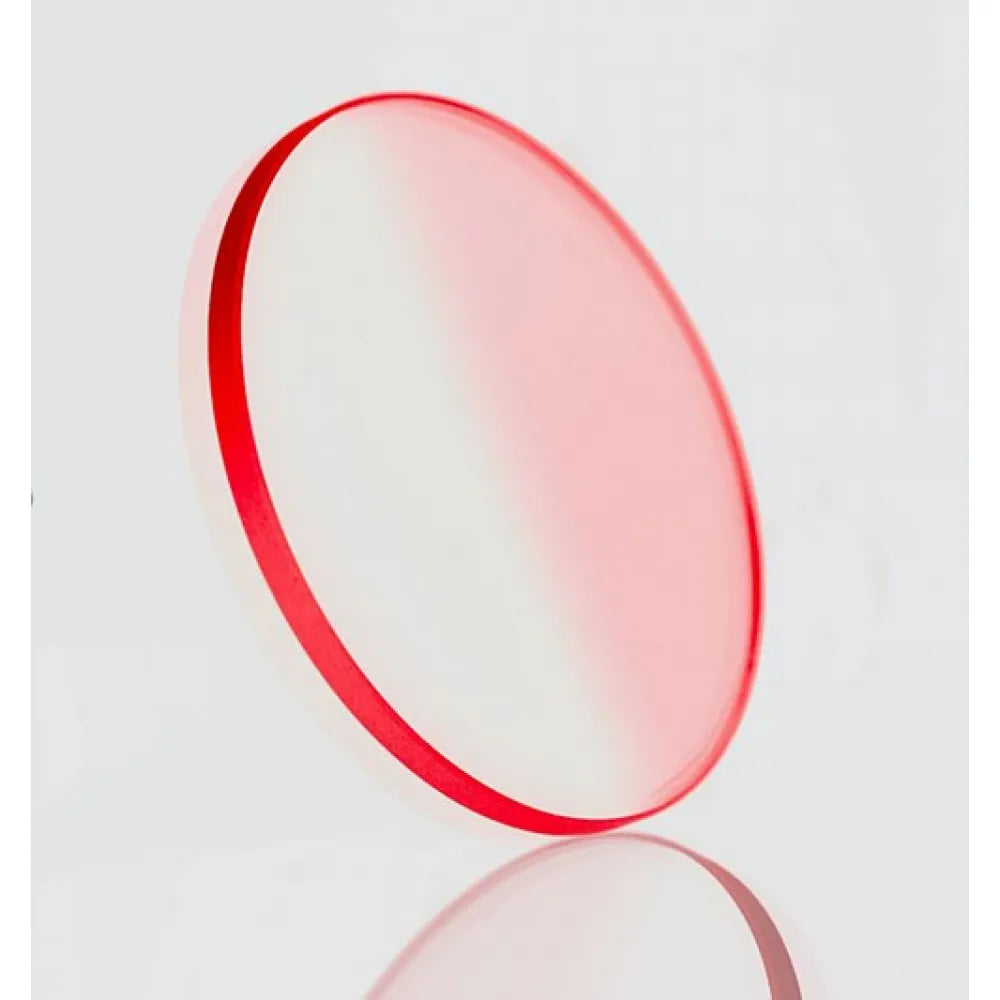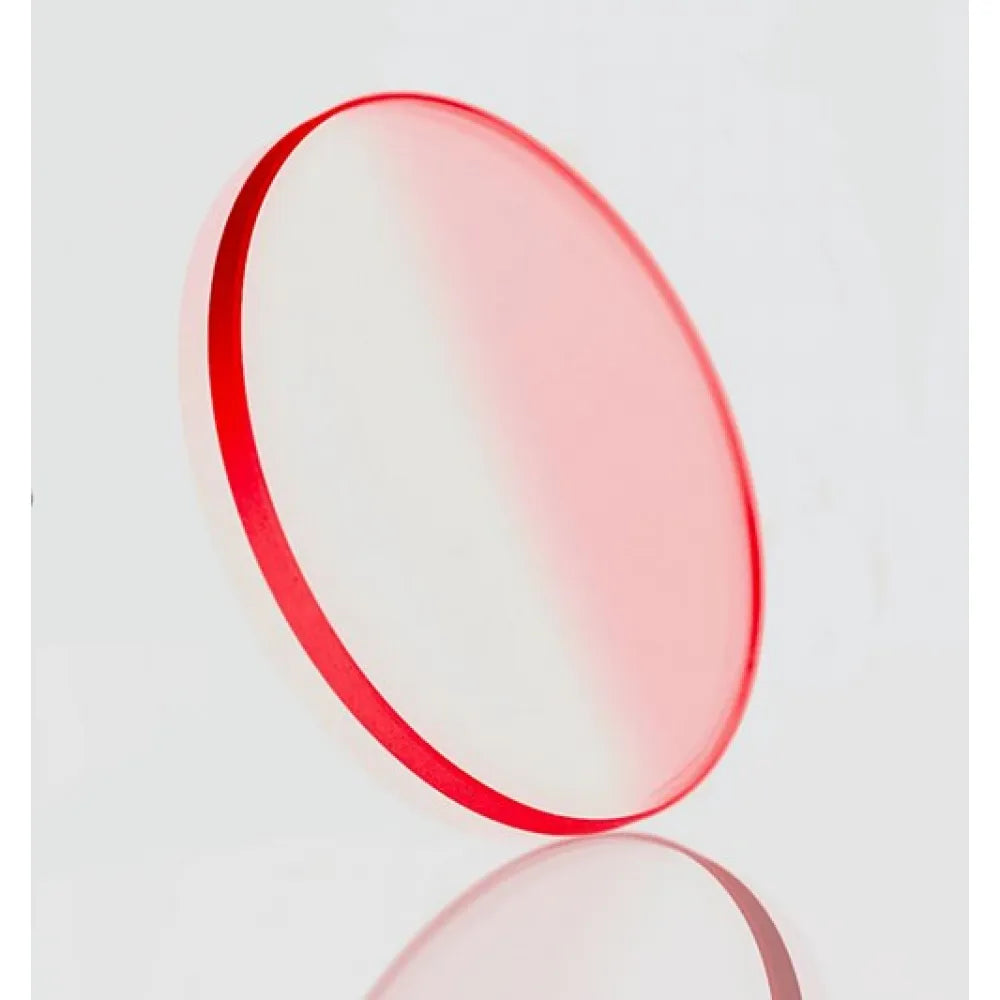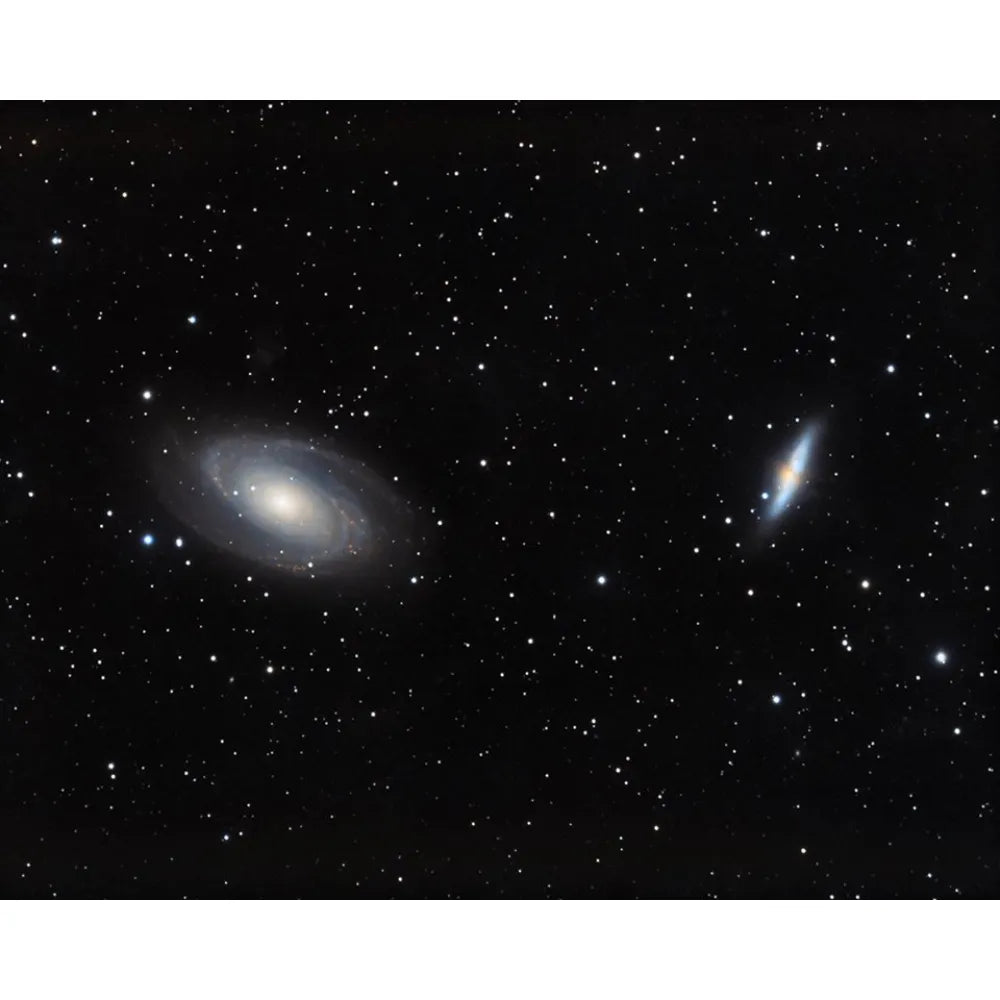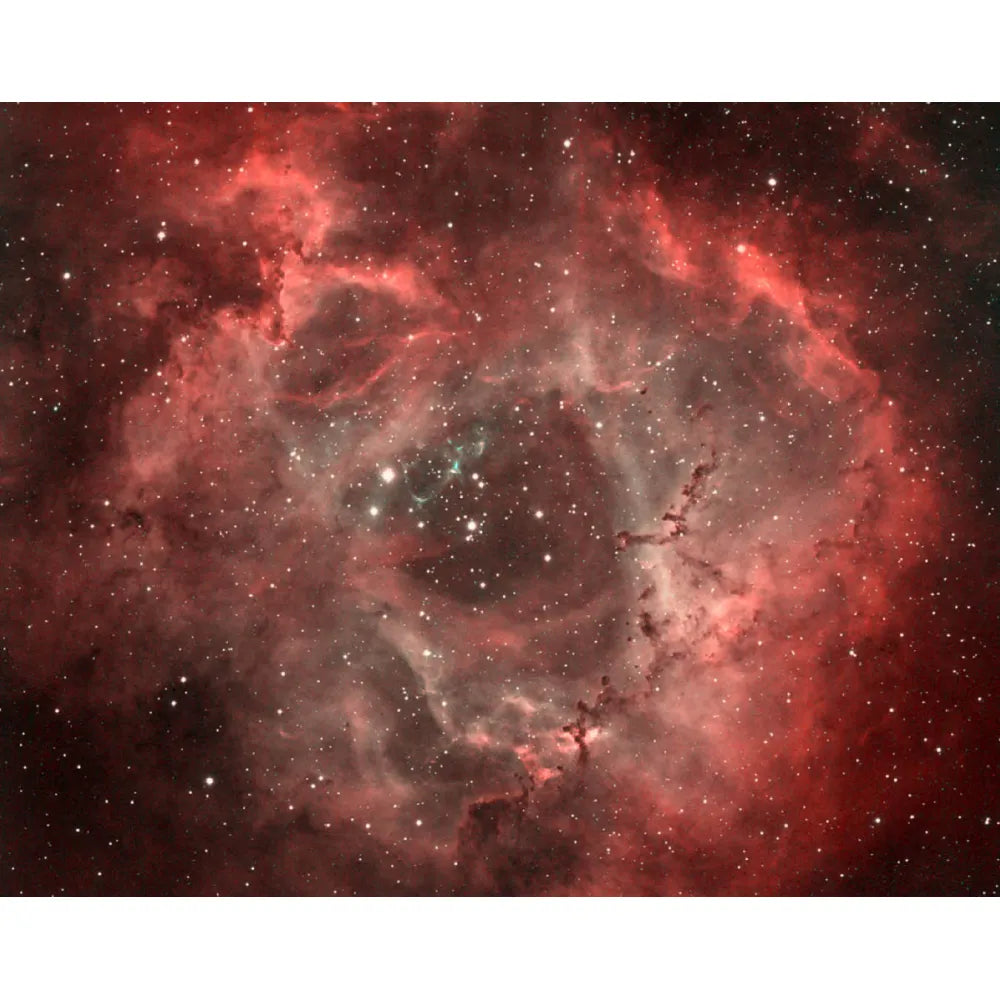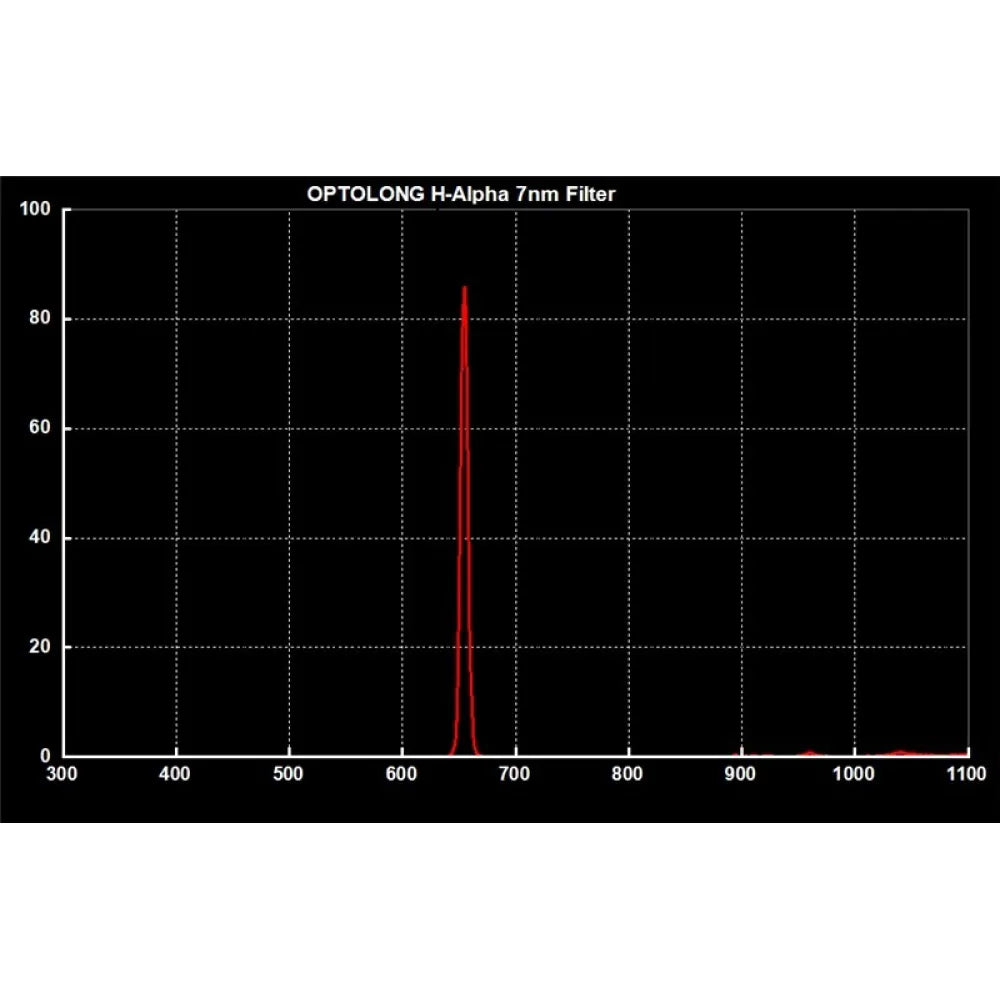The Dwarf3 telescope looks good easy to set up as a pensioner ILike it but not able to use it yet many thanks.
So far I am very impressed with the dwarf 3 I am getting the hang of setting it up the app is easy to follow
.
This premium Optolong Narrowband H-Alpha filter is designed for nebula observation or CCD/dSLR imaging at 7nm bandwidth of light centered on a wavelength of 656nm, which corresponds to H-alpha emission lines.
This filter will reduce the transmission of certain wavelengths of light, specifically those produced by artificial light including mercury vapor, and both high and low pressure sodium vapor lights and the unwanted natural light caused by neutral oxygen emission in our atmosphere (i.e. skyglow). It is a red colored filter. Many images of planetary nebulae and supernova remnants are taken only with H-alpha and OIII filters. They show great structural details, but have natural colors, looking like an RGB image.
Suitable for visual observation through large aperture telescopes or general CCD/dSLR imaging of most emission nebulae, planetary nebulae and supernova remnants even during full moon and in areas suffering from severe light pollution. Suitable for viewing bright nebulae like M42 Orion Nebula from cities with heavy light pollution.
Images of the Hubble-palette like the famous "Pillars of Creation" of the Eagle nebula (M16) are taken by the combination of H-alpha, OIII-CCD and SII-CCD filters. Narrowband imaging with a SHO set (H-alpha, OIII-CCD and SII-CCD) can be done with the moon up in a heavily light polluted area so your equipment won't have to be dormant for several weeks.
A H-alpha filter can also be the first addition to a LRGB set for most imagers who will blend a black-and-white H-alpha image into RGB data to enhance structural detail whilst maintaining natural look.
Bear in mind that light pollution filters do not eliminate the effects of light pollution or increase the object’s brightness. In many cases, they simply increase the contrast between nebula and night sky, but without brightening the nebula.
Image is for demonstration purposes only. Might show a similar product.
WARNING:
Optolong filters are not designed for solar observation. DO NOT LOOK AT THE SUN WITH ANY OPTOLONG FILTER as permanent eye damage will be the result.

The Major Emission Lines of Nebulae: H-α 656.3nm, H-β486.1nm, OIII 495.9nm, OIII 500.7nm
The Major Emission Lines of Artificial Light Pollution: Hg 435.8nm, 546.1nm, 577nm, 578.1nm, Na 598nm, 589.6nm, 615.4nm, 616.1nm
NGC 2244 Rosette Nebula (HOO, H-alpha=Red,OIII=Green,OIII=Blue)
As authorised dealers for all our products they come with a full manufacturers warranty along with our satisfaction guaranteed, no-questions-asked full refund policy for a full 30 days.
Please see our returns policy for full details.
We ship direct from UK warehouses and provide free shipping on all purchases within England, Scotland and Wales (Excluding highlands and Islands)
We use UPS, DHL, DHL Express, Parcelforce or Royal Mail for all orders.
Estimated delivery time is displayed at checkout.
See our shipping policy for more details.
Should you be outside the free shipping area then please contact us to discuss shipping options as prices vary depending on products and delivery location.
Got questions? Read through our FAQ list to see if it's answered there! If not, please contact us via this form.
